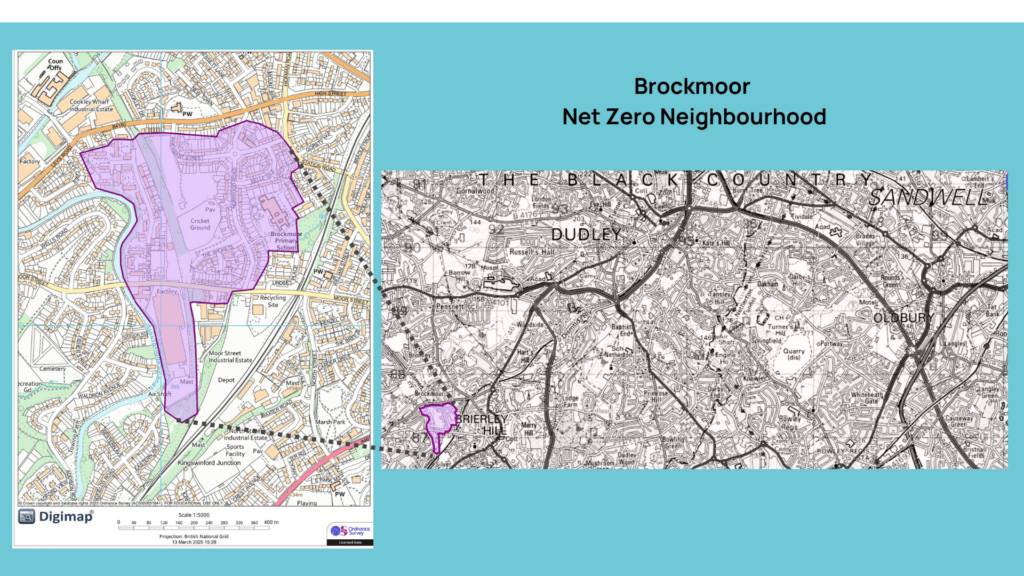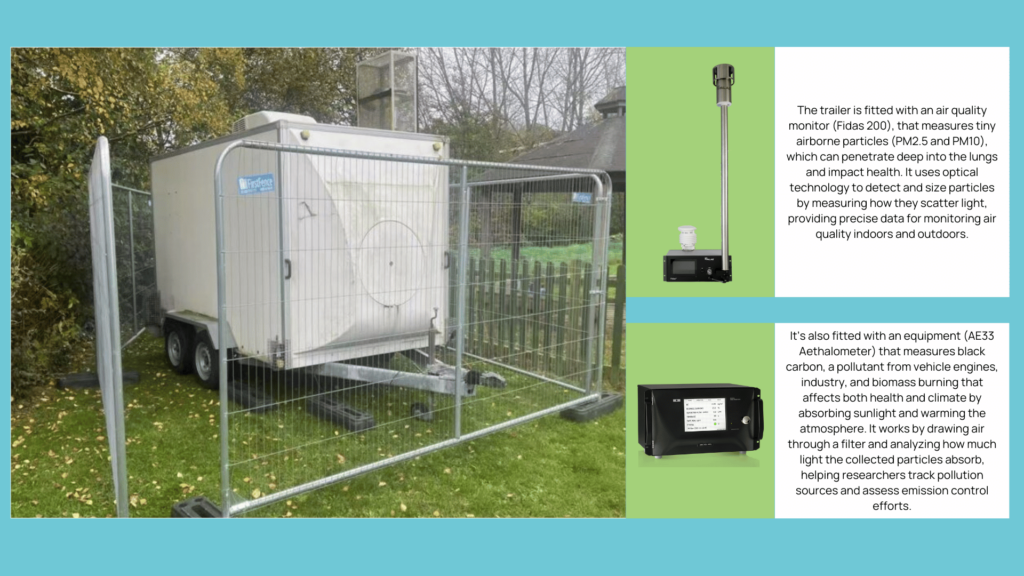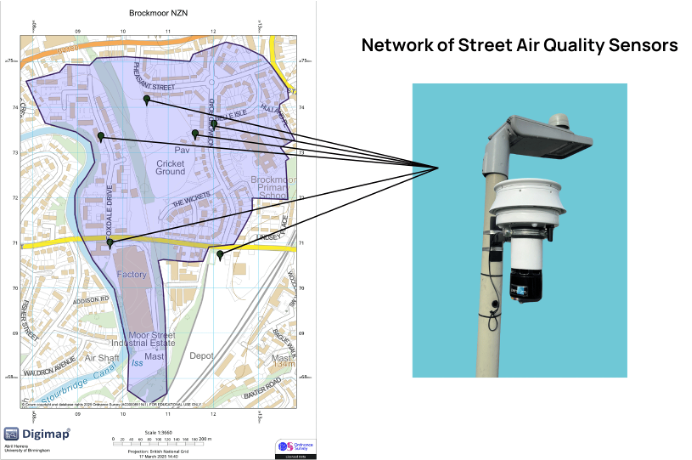
Monitoring Indoor & Outdoor Air Quality: Brockmoor, a Net Zero Neighbourhood in the Making
Across the West Midlands, efforts are underway to make homes more energy-efficient and reduce pollution. As part of this regional commitment, around 300,000 homes are expected to be upgraded by 2026. This process—known as retrofitting—includes improvements like better insulation, upgraded ventilation, and cleaner, more efficient energy systems. The goal is to keep homes warm and comfortable while using less energy and cutting carbon emissions.
But as this work continues, there are still important questions to answer:
How do these home improvements affect the air we breathe—both indoors and outdoors?
That’s where the WM-Net Zero project comes in.
In Brockmoor, a neighbourhood selected as part of the region’s journey to “net zero,” researchers are working with local residents to study these changes in real time. Using indoor air quality sensors and outdoor monitoring equipment, we are tracking air pollution levels before, during, and after homes are retrofitted.
By studying both the indoor and outdoor air environment, this project will help us understand the full impact of energy-saving upgrades on health, comfort, and climate—in individual homes and across the community.

How Are We Measuring Air Quality?
To better understand air pollution in Brockmoor’s Net Zero Neighbourhood, we are using a combination of cutting-edge air quality monitoring tools, such as: a mobile air quality lab, a network of street-level sensors, and indoor air quality monitors in homes.
These help us track both outdoor and indoor air pollutants, providing valuable insights into how pollution levels change over time and how they are influenced by daily activities, weather, and home improvements.
Here’s how we are gathering this data (click on each title to expand information):
Super-Laboratory on Wheels
A mobile air quality lab, funded by NERC (the UK’s Environmental Research Council), is stationed in Brockmoor to monitor pollution levels. It focuses on measuring particulate matter (PM) in different size fractions, including PM2.5 and PM10, as well as black carbon. These pollutants are significant because black carbon contributes to atmospheric warming, while fine particles can pose serious health risks. Understanding their levels is essential for assessing both environmental and public health impacts.

Street-Level Air Quality Sensors
Six small air sensors have been placed on lampposts around Brockmoor, especially near the school. These sensors track key air pollutants, including nitrogen dioxide (NO₂), fine particles (PM2.5 and PM10), and ozone (O₃), as well as temperature and humidity. By collecting this data continuously, we can identify pollution hotspots and understand how air quality changes over time.

Indoor Air Quality Monitoring in Homes
Sensors are being placed in the kitchens and living rooms of selected homes across Brockmoor to track PM2.5, CO₂, temperature, and humidity. These sensors help us understand how everyday household activities—like cooking, cleaning, and ventilation—impact indoor air. Since people spend around 90% of their time indoors, this data is essential for improving air quality inside homes.

Why This Matters
By comparing air quality before and after retrofitting, we can see whether home upgrades help reduce pollution exposure or if additional improvements—such as better ventilation—are needed. The data collected will also help policymakers, local authorities, and researchers develop smarter, healthier, and more effective Net Zero solutions.
How Can You Get Involved?
We’re inviting householders — people who own or rent their homes — in the Dudley Metropolitan Borough Council area. This includes homes making energy-saving improvements and those that aren’t. By comparing both, we can see how these changes affect air quality, temperature, and damp over time.
For more information on how to participate, visit Indoor Air Quality Sensors-Brockmoor or contact wm-netzero@contacts.bham.ac.uk.